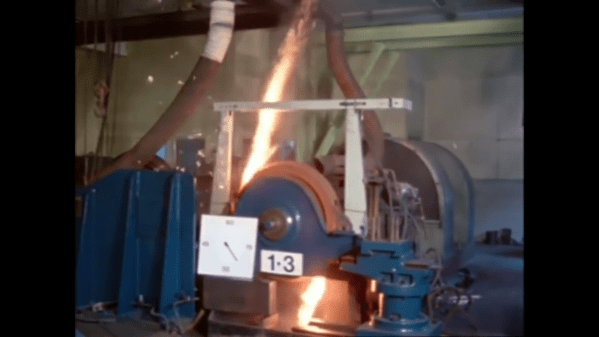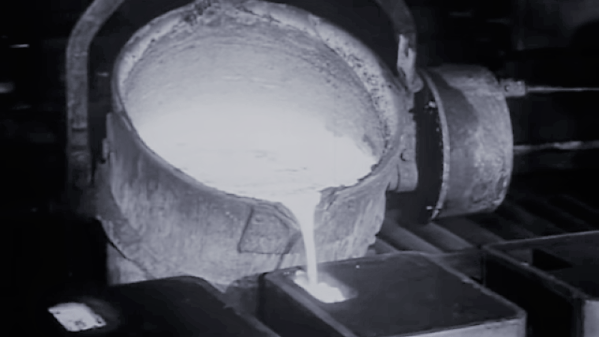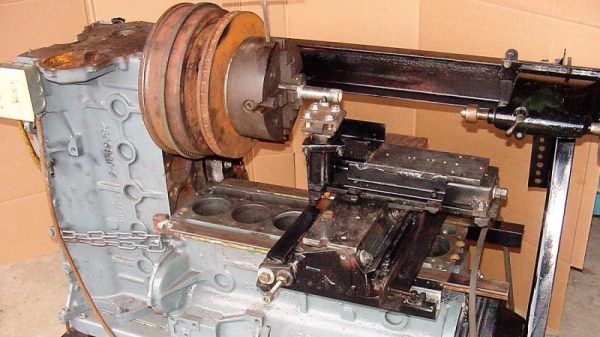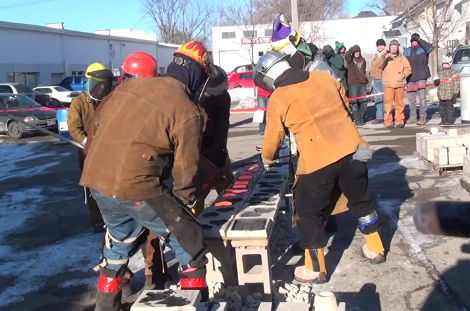The thermite process is a handy way to generate molten iron in the field. It’s the reaction between aluminium metal and iron oxide, which results in aluminium oxide and metallic iron. It’s hot enough that the iron is produced as a liquid, which means it’s most notably used for in-field welding of things such as railway tracks. All this is grist to [Cody’s Lab]’s mill of course, so in the video below the break he attempts to use a thermite reaction in a rough-and-ready foundry, to make a cast-iron frying pan.
Most of the video deals with the construction of the reaction vessel and the mold, for which he makes his own sodium silicate and cures it with carbon dioxide. The thermite mix itself comes from aluminium foil and black iron oxide sand, plus some crushed up drinks cans for good measure.
The result is pretty successful at making a respectable quantity of iron, and his pour goes well enough to make a recognizable frying pan. It has a few bubbles and a slight leak, but it’s good enough to cook an egg. We’re sure his next try will be better. Meanwhile this may produce a purer result, but it’s by no means the only way to produce molten iron on a small scale.

















